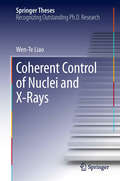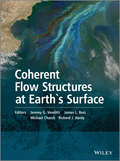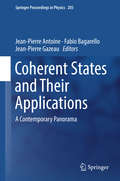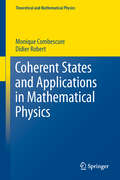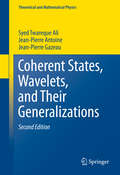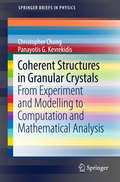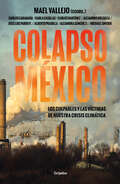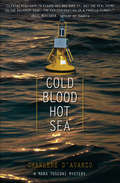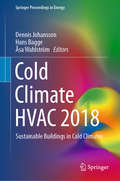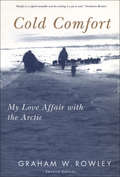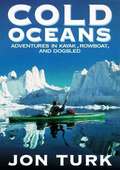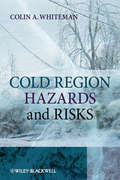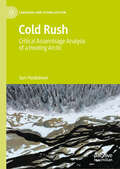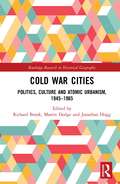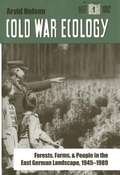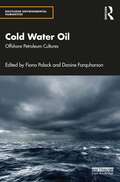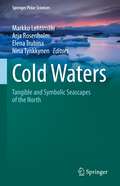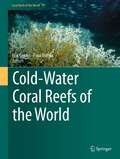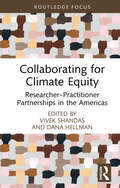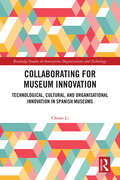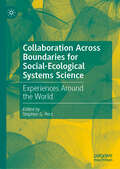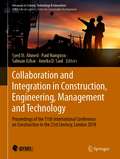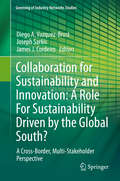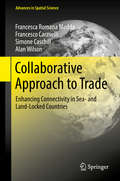- Table View
- List View
Coherent Control of Nuclei and X-Rays (Springer Theses)
by Wen-Te LiaoNovel coherent light sources such as x-ray free-electron lasers open exciting prospects for the interaction of light with nuclei. The thesis "Coherent Control of Nuclei and X-rays" covers this still-developing field and proposes, in a daring attempt to revolutionize nuclear physics, three innovative schemes for taming nuclei using coherent effects. The theoretical explorations, which address control of nuclear quantum states, a nuclear memory for single photons in future photonic circuits, and optimized concepts for a nuclear clock, make use of new approaches at the borderline between nuclear physics and quantum dynamics. The result is a well written work, impressive in its stimulating style and promising ideas.
Coherent Flow Structures at Earth's Surface
by Jeremy G. Venditti Michael Church Richard J. Hardy James L. BestAn expert review of recent progress in the study of turbulent flows with a focus on recently identified organized structures. This book reviews the recent progress in the study of the turbulent flows that sculpt the Earth's surface, focusing in particular on the organized structures that have been identified in recent years within turbulent flows. These coherent flow structures can include eddies or vortices at the scale of individual grains, through structures that scale with the flow depth in rivers or estuaries, to the large-scale structure of flows at the morphological or landform scale. These flow structures are of wide interest to the scientific community because they play an important role in fluid dynamics and influence the transport, erosion and deposition of sediment and pollutants in a wide variety of fluid flow environments. Scientific knowledge of these structures has improved greatly over the past 20 years as computational fluid dynamics has come to play an increasing important part in building our understanding of coherent flow structures across a broad range of scales.Chapters comprise a series of major, invited papers and a selection of the most novel, innovative papers presented at the second Coherent Flow Structures Conference held August 3-5, 2011 at Simon Fraser University in Burnaby, British Columbia. Chapters focus on six major themes:Dynamics of coherent flow structures (CFS) in geophysical flowsInteraction of turbulent flows, vegetation and ecological habitatsCoherent structure of atmospheric flowsNumerical modeling of coherent flow structuresTurbulence in open channel flowsCoherent flow structures, sediment transport and morphological feedbacks.
Coherent States and Their Applications: A Contemporary Panorama (Springer Proceedings in Physics #205)
by Fabio Bagarello Jean-Pierre Gazeau Jean-Pierre AntoineCoherent states (CS) were originally introduced in 1926 by Schrödinger and rediscovered in the early 1960s in the context of laser physics. Since then, they have evolved into an extremely rich domain that pervades virtually every corner of physics, and have also given rise to a range of research topics in mathematics.The purpose of the 2016 CIRM conference was to bring together leading experts in the field with scientists interested in related topics, to jointly investigate their applications in physics, their various mathematical properties, and their generalizations in many directions. Instead of traditional proceedings, this book presents sixteen longer review-type contributions, which are the outcome of a collaborative effort by many conference participants, subsequently reviewed by independent experts.The book aptly illustrates the diversity of CS aspects, from purely mathematical topics to physical applications, including quantum gravity.
Coherent States and Applications in Mathematical Physics (Theoretical and Mathematical Physics)
by Didier Robert Monique CombescureThis book presents the various types of coherent states introduced and studied in the physics and mathematics literature and describes their properties together with application to quantum physics problems. It is intended to serve as a compendium on coherent states and their applications for physicists and mathematicians, stretching from the basic mathematical structures of generalized coherent states in the sense of Perelomov via the semiclassical evolution of coherent states to various specific examples of coherent states (hydrogen atom, quantum oscillator, ...).
Coherent States and Applications in Mathematical Physics (Theoretical and Mathematical Physics)
by Didier Robert Monique CombescureThis second edition of the outstanding monograph on coherent states by Combescure and Robert published in 2012 is enriched with figures, historical information and numerical simulations and enlarged with five new chapters presenting important rigorous results obtained in the recent years. The new chapters include various applications such as to the time dependent Schroedinger equation and the Ehrenfest time, to the growth of norms and energy exchanges, to chaotic systems and classical systems with quantum ergodic behavior, and to open quantum systems, and to adiabatic decoupling for multicomponent systems Overall, this book presents the various types of coherent states introduced and studied in the physics and mathematics literature and describes their properties together with application to quantum physics problems. It is intended to serve as a compendium on coherent states and their applications for physicists and mathematicians, stretching from the basic mathematical structures of generalized coherent states in the sense of Perelomov via the semiclassical evolution of coherent states to various specific examples of coherent states (hydrogen atom, quantum oscillator, etc.). It goes beyond existing books on coherent states in terms of a rigorous mathematical framework
Coherent States, Wavelets, and Their Generalizations (Theoretical and Mathematical Physics)
by Jean-Pierre Gazeau Syed Twareque Ali Jean-Pierre AntoineThis second edition is fully updated, covering in particular new types of coherent states (the so-called Gazeau-Klauder coherent states, nonlinear coherent states, squeezed states, as used now routinely in quantum optics) and various generalizations of wavelets (wavelets on manifolds, curvelets, shearlets, etc. ). In addition, it contains a new chapter on coherent state quantization and the related probabilistic aspects. As a survey of the theory of coherent states, wavelets, and some of their generalizations, it emphasizes mathematical principles, subsuming the theories of both wavelets and coherent states into a single analytic structure. The approach allows the user to take a classical-like view of quantum states in physics. Starting from the standard theory of coherent states over Lie groups, the authors generalize the formalism by associating coherent states to group representations that are square integrable over a homogeneous space; a further step allows one to dispense with the group context altogether. In this context, wavelets can be generated from coherent states of the affine group of the real line, and higher-dimensional wavelets arise from coherent states of other groups. The unified background makes transparent an entire range of properties of wavelets and coherent states. Many concrete examples, such as coherent states from semisimple Lie groups, Gazeau-Klauder coherent states, coherent states for the relativity groups, and several kinds of wavelets, are discussed in detail. The book concludes with a palette of potential applications, from the quantum physically oriented, like the quantum-classical transition or the construction of adequate states in quantum information, to the most innovative techniques to be used in data processing. Intended as an introduction to current research for graduate students and others entering the field, the mathematical discussion is self-contained. With its extensive references to the research literature, the first edition of the book is already a proven compendium for physicists and mathematicians active in the field, and with full coverage of the latest theory and results the revised second edition is even more valuable.
Coherent Structures in Granular Crystals: From Experiment And Modelling To Computation And Mathematical Analysis (SpringerBriefs in Physics)
by Panayotis G. Kevrekidis Christopher ChongThis book summarizes a number of fundamental developments at the interface of granular crystals and the mathematical and computational analysis of some of their key localized nonlinear wave solutions. The subject presents a blend of the appeal of granular crystals as a prototypical engineering tested for a variety of diverse applications, the novelty in the nonlinear physics of its coherent structures, and the tractability of a series of mathematical and computational techniques to analyse them. While the focus is on principal one-dimensional solutions such as shock waves, traveling waves, and discrete breathers, numerous extensions of the discussed patterns, e.g., in two dimensions, chains with defects, heterogeneous settings, and other recent developments are discussed. The emphasis on the subject was motivated by models in condensed matter physics, ferroelectrics, high energy physics, and statistical mechanics, leading to developments in mathematical analysis, numerical computation and insights on the physical aspects of the model. The book appeals to researchers in the field, as well as for graduate and advanced undergraduate students. It will be of interest to mathematicians, physicists and engineers alike.
Colapso México: Los culpables y las víctimas de nuestra crisis climática
by Mael VallejoYA ESTAMOS VIVIENDO UNA CRISIS PEOR QUE LA PANDEMIA. La crisis ambiental se cobrará más vidas y golpeará más duraderamente a México que el Covid-19, simplemente no hemos querido verlo. Los reportajes de este libro retratan las caras que ya presenta este fenómeno en el país: el horror de los huracanes en Centroamérica y la inundación migratoria que desatan, la confluencia de los vientos del Polo Norte con la minería más salvaje, el vínculo entre la llegada de un tren y la agonía del jaguar, la sangre que derrama la tala clandestina, el agua como vida y muerte de personas y poblados, y la relación entre el silencio y las piedras en los pulmones, entre otros. En Colapso México, algunos de los periodistas más importantes de la región documentan que, más allá de la amenaza real del calentamiento global, es necesario actuar ya ante la avaricia desbocada de los empresarios y la falta de regulación y entendimiento del problema de las autoridades. Afortunadamente, en este diagnóstico viene también el germen de la solución...
Cold Blood, Hot Sea
by Charlene D'Avanzo"Charlene D'Avanzo is a marine ecologist who has written a first crime novel that makes her scientific specialty exciting... The central character, Mara Tusconi, is a Maine oceanographer who thinks there's something fishy (pardon the pun) about the death of a colleague on board a research ship."-THE TORONTO STAR"Cold Blood, Hot Sea showcases the effects of climate change on a particular industry, presenting a range of opinions and attitudes, [and conveys] a global problem on a personal level. Cold Blood, Hot Sea will make for great beach reading, but it also has meat on its bones, with rich characterizations and an intriguing mystery at its core."-FOREWORD REVIEWS"An oceanographer fears she was the target of an accident at sea that kills one of her colleagues. Are climate change doubters at work?...[Cold Blood, Hot Sea combines] niche material about Maine life and oceanography."-KIRKUS REVIEWS"The central premise is a new one, and forms an excellent basis for the mayhem and dramatic situations we demand in our murder mysteries. Five out of five stars."-ATLANTIC COASTAL KAYAKER"Sleuths will have to figure out who done it, but the real crime is the backdrop here: the endless heating of a fragile planet."-BILL MCKIBBEN, author of Eaarth"Cold Blood, Hot Sea is a cli-fi mystery that both entertains and bores deep into the heart of the issues. The author knows her science, too." -DAN BLOOM, editor, The Cli-Fi Report"Artfully mixing scientific detail with her characters' personal struggles, Charlene D'Avanzo creates a tense story that makes it clear: When profits are favored over health of the planet, we are all at risk."-JOEANN HART, author of FloatA thrilling contribution to the new wave of cli-fi hitting the shelves, Cold Blood, Hot Sea pits climate change scientists against big energy conspirators. When a colleague is killed aboard the research vessel Intrepid, oceanographer Mara Tusconi believes it's no accident. As she investigates, Mara becomes entangled in a scheme involving powerful energy executives with much to lose if her department colleagues continue their climate change research. Mara's career-and life-is on the line, threatened by intrigue as big and dark as the ocean.Marine ecologist and award-winning environmental educator Charlene D'Avanzo studied the New England coast for forty years. As a scientist, D'Avanzo sees firsthand the effects of climate change, and as a college professor, she knows the importance of storytelling in bringing ideas to life. Today she uses mysteries to immerse readers in Maine waters' stunning beauty and grave threats. An avid sea kayaker, D'Avanzo lives in Yarmouth, Maine. Cold Blood, Hot Sea is her first novel.
Cold Climate HVAC 2018: Sustainable Buildings in Cold Climates (Springer Proceedings in Energy)
by Dennis Johansson Hans Bagge Åsa WahlströmThis volume presents the proceedings of the 9th Cold Climate HVAC conference, which was held in Kiruna, Sweden in 2018. The conference highlighted key technologies and processes that allow scientists, designers, engineers, manufacturers and other decision makers in cold climate regions to achieve good indoor environmental quality (IEQ) with a minimum use of energy and other resources. The conference addressed various technical, economic and social aspects of buildings and HVAC systems in new and renovated buildings. This proceedings volume gathers peer-reviewed papers by a diverse and international range of authors and showcases perspectives and practices in cold climate building design from around the globe. The following major aspects, which include both fundamental and theoretical research as well as applications and case studies, are covered: (1) Energy and power efficiency and low-energy buildings; (2) Renovating buildings; (3) Efficient HVAC components; (4) Heat pumps and geothermal systems; (5) Municipal and city energy systems; (6) Construction management; (7) Buildings in operation; (8) Building simulation; (9) Reference data; (10) Transdisciplinary connections and social aspects; (11) Indoor environments and health; (12) Moisture safety and water damage; (13) Codes, regulations, standards and policies; and (14) Other aspects of buildings in cold climates.
Cold Comfort
by Graham RowleyIn 1936 Graham Rowley went to the still-unexplored west coast of Baffin Island as the archaeologist for a small British expedition - the last in the Canadian North that depended on traditional techniques. Cold Comfort, his acclaimed memoir of this period, captures the way of life in the North before World War II, including the experience of travelling by dogsled over unexplored land. This new edition includes the beginning of Rowley's planned sequel covering his post-war experiences in the Arctic. The additional three chapters describe Operation Musk-Ox, the first military exercise to show that it was feasible to manoeuvre in the Arctic even in winter, and Rowley's work for the Canadian Defense Research Board. An afterword by Susan Rowley and John Bennett expands on Rowley's ongoing involvement in the rapid change that took place from the Cold War to the establishment of Nunavut.
Cold Oceans
by John TurkFrom its opening passages, Jon Turk's Cold Oceans chronicles explorations in both exterior and interior landscapes. In honest, accessible prose, Turk retraces more than two decades of his varied and stirring adventures--attempting to round Cape Horn solo in a kayak, rowing the Northwest Passage, dogsledding the east coast of Baffin Island, and kayaking from Ellesmere Island to Greenland. As Turk plunges headlong through icy seas, repeated and assorted blunders, and bouts of personal lows, he transcends mere adventure storytelling to explore a changing notion of himself, deepening relationships, and the nature of failure and true success. These passages contain some of Cold Oceans's greatest riches.
Cold Region Hazards and Risks
by Colin A. WhitemanThis is a unique, timely and engaging text with wide ranging geographical coverage. The text brings together, for the first time, information about a vast array of hazards associated with ice and snow, spanning both well known phenomenon (e.g. avalanches) and the less familiar (e.g. river ice jams and ice storms) using, in many cases, material which is rarely seen outside advanced academic research books and journals. The range of ice-related hazards will be introduced and the significance of the current global warming context discussed. Broad physical models of glacial, periglacial and atmospheric cold environments are presented to provide a scientific context for discussion of the human issues of risk, vulnerability impact and mitigation.Key Features:Wide ranging geographical coverage (the Americas, Asia, Australasia, Antarctic & Europe) Localised hazards (avalanches, life storms, landslides) contrasted to those with wider reaching effects (arctic ice loss, ice sheet retreat and wide spread permafrost decay) Includes the latest developments in the field Each chapter includes hazards overview, summery, conclusions, potential projects exercise and key references Includes a supplementary website with figures from the text and further references Each chapter includes a hazards overview, summary, conclusions, potential projects exercise and key references
Cold Rush: Critical Assemblage Analysis of a Heating Arctic (Language and Globalization)
by Sari PietikäinenThis book is an original study of Cold Rush, an accelerated race for the extraction and protection of Arctic natural resources. The Northernmost reach of the planet is caught up in the double developments of two unfinished forces – rapidly progressing climate change and global economic investment - working simultaneously in tension and synergy. Neither process is linear or complete, but both are contradictory and open-ended. This book traces the multiplicity of Cold Rush in the Finnish Arctic, a high-stakes ecological, economic, and political hotspot. It is a heterogeneous space, understood as indigenous land within local indigenous Sámi people politics, the last frontier from a colonial perspective, and a periphery under the modernist nation-state regime. It is now transforming into an economic hub under global capitalism, intensifying climate change and unforeseen geo-political changes. Based on six years of ethnography, the book shows how people struggle, strategize, and profit from this ongoing, complex, and multidirectional change. The author offers a new theoretical approach called critical assemblage analysis, which provides an alternative way of exploring the dynamics between language and society by examining the interaction between material, discursive, and affective dimensions of Cold Rush. The approach builds on previous work at the intersection of critical discourse analysis, critical sociolinguistics, nexus analysis and ethnography, but expands toward works by philosophers Michel Foucault, Gilles Deleuze, and Felix Guattari. This book will be of interest to researchers on language, discourse, and sociolinguistics interested in engaging with social critique embedded in global capitalism and accelerating climate change; as well as researchers in the social and human sciences and natural sciences, who are increasingly aware of the fact that the theoretical and analytical move beyond the traditional dichotomies like language/society, nature/human and micro/macro is central to understanding today´s complex, intertwined social, political, economic and ecological processes.
Cold War Cities: Politics, Culture and Atomic Urbanism, 1945–1965 (Routledge Research in Historical Geography)
by Martin Dodge Richard Brook Jonathan HoggThis book examines the impact of the Cold War in a global context and focuses on city-scale reactions to the atomic warfare. It explores urbanism as a weapon to combat the dangers of the communist intrusion into the American territories and promote living standards for the urban poor in the US cities. The Cold War saw the birth of ‘atomic urbanisation’, central to which were planning, politics and cultural practices of the newly emerged cities. This book examines cities in the Arctic, Europe, Asia and Australasia in detail to reveal how military, political, resistance and cultural practices impacted on the spaces of everyday life. It probes questions of city planning and development, such as: How did the threat of nuclear war affect planning at a range of geographic scales? What were the patterns of the built environment, architectural forms and material aesthetics of atomic urbanism in difference places? And, how did the ‘Bomb’ manifest itself in civic governance, popular media, arts and academia? Understanding the age of atomic urbanism can help meet the contemporary challenges that cities are facing. The book delivers a new dimension to the existing debates of the ideologically opposed superpowers and their allies, their hemispherical geopolitical struggles, and helps to understand decades of growth post-Second World War by foregrounding the Cold War.
Cold War Ecology: Forests, Farms, and People in the East German Landscape, 1945-1989
by Arvid NelsonEast Germany, its economy, and its society were in decline long before the country's political collapse in the late 1980s. The clues were there in the natural landscape, Arvid Nelson argues in this groundbreaking book, but policy analysts were blind to them. Had they noted the record of the leadership's values and goals manifest in the landscape, they wouldn't have hailed East Germany as a Marxist-Leninist success story. Nelson sets East German history within the context of the landscape history of two centuries to underscore how forest and ecosystem change offered a reliable barometer to the health and stability of the political system that governed them. Cold War Ecology records how East German leaders' indifference to human rights and their disregard for the landscape affected the rural economy, forests, and population. This lesson from history suggests new ways of thinking about the health of ecosystems and landscapes, Nelson shows, and he proposes assessing the stability of modern political systems based on the environment's system qualities rather than on political leaders' goals and beliefs.
Cold Water Oil: Offshore Petroleum Cultures (Routledge Environmental Humanities)
by Fiona PolackCold Water Oil: Offshore Petroleum Cultures is a collection of essays examining how societies conceive of fossil fuel extraction in the inhospitable but fragile waters of the North Atlantic and Arctic oceans. What happens offshore matters. Currently, over a quarter of the world’s oil and gas is produced from beneath the seas. The offshore petroleum industry is thus a crucial point of origin for global carbon emissions, and other environmental harms. Cold Water Oil: Offshore Petroleum Cultures illuminates ignored histories, influential contemporary narratives, and emerging energy and environmental futures. The volume centres on North Atlantic and Arctic regions; the continuing but often strongly contested pursuit of oil and gas in frigid, tumultuous, and environmentally sensitive seas enforces the lengths to which corporations and governments will go to maintain the centrality of fossil fuels. The book’s contributors focus on the cultural, social, and ecological implications of oil and gas extraction in the oceanic territories of Canada, Norway, the UK, Russia, the US, and the Iñupiat of Alaska at a time of profound global uncertainty. In conversation with the energy and environmental humanities, and critical ocean studies, Cold Water Oil considers a region central to debates about climate change and the planet’s future. Cold Water Oil engages students and researchers interested in climate change, energy humanities, critical ocean studies, and North Atlantic and Arctic issues.
Cold Waters: Tangible and Symbolic Seascapes of the North (Springer Polar Sciences)
by Arja Rosenholm Elena Trubina Markku Lehtimäki Nina TynkkynenThis book addresses the Arctic and the northern regions by exploring cold waters and northern seascapes. It focuses on cultural discourses and artistic representations concerning the human experience and imagination of how the Arctic Ocean has been explored and used. It aims to assess what is specific to the northern waters vis-à-vis other sea and water areas in the world. The contextual background is provided by the fundamental shift from terra-based thinking towards aqua-based thinking, including the histories of the northern waters and the innovative ocean studies of the last decades. This book will be of interest to readers in Arctic studies and Sea and Ocean studies (including those with interests in literature, history, cultural and film studies, anthropology and politics), Environmental History and Cultural studies as well as in Russian studies. The book has been assembled with a view towards upper-level undergraduate and post-graduate students and scholars and will also be appropriate for courses in the fields mentioned above. The book will be of interest to specialists working in and with Arctic environmental issues. There is a broad array of international academic networks, environmental, governance and cultural associations outside academia whose members may also find the book of interest.
Cold-Water Coral Reefs of the World (Coral Reefs of the World #19)
by Erik Cordes Furu MienisCold-water corals form reef structures in continental margin and seamount settings world-wide, making them more wide-spread and abundant than shallow-water reefs. Their role in these ecosystems is no less important than the influence that shallow-water coral reefs have on tropical systems. They create habitat structure, host endemic species, enhance elemental cycling, alter current flow, sequester carbon, and provide many other ecosystem services that we are just beginning to understand. The rapidly evolving state of knowledge of cold-water and deep-sea coral reefs has not been compiled in over 10 years. This volume synthesizes recent and historical information, reveals new findings from reefs that have been discovered only recently, and presents key avenues for future research. We are on the cusp of understanding the critical role that cold-water coral reefs play in the world’s oceans, and this book lays the foundation on which this knowledge will be built in the future.
Collaborating for Climate Equity: Researcher–Practitioner Partnerships in the Americas (Routledge Focus on Environment and Sustainability)
by Vivek Shandas Dana HellmanThis book explores the capacity of different stakeholders to work together and build urban resilience to climate change through an equity-centered approach to cross-sectoral collaboration. Urban areas, where the majority of the global population dwells, are particularly vulnerable to a myriad of climate stressors, the effects of which are acutely present in places and to communities that have been largely excluded from decision-making processes. Our need for working and learning together is at a critical threshold, yet at present, the process for and understanding of inter-sectoral collaborations remains a theoretical ideal and falls short of the broad appeal that many have claimed. Collaborating for Climate Equity argues that researcher–practitioner partnerships offer a promising pathway toward ensuring equitable outcomes while building climate resilience. By presenting five case studies from the United States, Chile, and Mexico, each chapter explores the contours of developing robust researcher–practitioner collaborations that endure and span institutional boundaries. The case studies included in the book are augmented by a synthesis that reflects upon the key findings and offers generalizable principles for applying similar approaches to other cities across the globe. This work contributes to a nascent knowledge base on the real-world challenges and opportunities associated with researcher–practitioner partnerships. It provides guidance to academics and practitioners involved in collaborative research, planning, and policymaking.
Collaborating for Museum Innovation: Technological, Cultural, and Organisational Innovation in Spanish Museums (Routledge Studies in Innovation, Organizations and Technology)
by Chuan LiThis book is a fresh reflection on the study of museum innovation, with special attention paid to the enabling role of collaboration within the process. It sets out to capture the innovation dynamics of museums and explore to what extent and how collaborative arrangement can contribute to different types of innovative activities in the museum sector. The book presents a holistic review of museum innovation from multiple perspectives of, among others, economics, sociology, museology, and organisational study, while adopting an interdisciplinary approach to explore and analyse the innovation process and collaboration mechanism from the viewpoint of economics and sociology. The research presented is based on three interdependent aspects: first, a holistic definition and taxonomy of innovation in museum organisations; second, qualitative and quantitative analysis of the enabling role of collaboration in technological, cultural, and organisational innovation in museums; and third, multiple case studies for the identification and evaluation of effective collaboration models in different types of innovation. This is a problem-oriented study, which avoids focusing on those large and super museums that have been well-documented in prior studies; instead, it concentrates on small- and medium-sized museums, which account for more than 85% of museums in the world and have become the main resources of cultural tourism and the creative economy at a regional level. Primarily written for postgraduates, researchers, and academics interested in innovation study, innovation in cultural and creative sectors, and museum study, the findings may also have important implications on innovation management and policy for regional museums and public authorities.
Collaboration Across Boundaries for Social-Ecological Systems Science: Experiences Around the World
by Stephen G. PerzCollaboration across boundaries is widely recognized as a vital requisite for the advancement of innovative science to address problems such as environmental degradation and global change. This book takes collaboration across boundaries seriously by focusing on the many challenges and practices involved in team science when spanning disciplinary, organizational, national and other divides. The authors draw on a shared framework for managing the challenges of collaboration across boundaries as applied to the science of understanding complex social-ecological systems.Teams working across boundaries on diverse social-ecological systems in countries around the world report their challenges and share their practices, outcomes and lessons learned. From these diverse experiences arise many commonalities and also some important differences. These provide the basis for a set of recommendations to any collaborators intending to use science as a tool to better understand social-ecological systems and to improve their management and governance.
Collaboration and Integration in Construction, Engineering, Management and Technology: Proceedings of the 11th International Conference on Construction in the 21st Century, London 2019 (Advances in Science, Technology & Innovation)
by Paul Hampton Syed M. Ahmed Salman Azhar Amelia D. SaulThis book gathers papers presented at the 11th International Conference on Construction in the 21st Century, held in London in 2019. Bringing together a diverse group of government agencies, academics, professionals, and students, the book addresses issues related to construction safety, innovative technologies, lean and sustainable construction, international construction, improving quality and productivity, and innovative materials in the construction industry. In addition, it highlights international collaborations between various disciplines in the areas of construction, engineering, management, and technology. The book demonstrates that, as the industry moves forward in an ever-complex global economy, multi-national collaboration is crucial, and its future growth will undoubtedly depend on international teamwork and alliances.
Collaboration for Sustainability and Innovation: A Cross-Border, Multi-Stakeholder Perspective (Greening of Industry Networks Studies #3)
by James J. Cordeiro Joseph Sarkis Diego A. Vazquez-BrustA number of arguments are made by an international group of authors in this though provoking book about an understudied and socially important context. A future in which financial wealth transfers across the North-South divide from richer to poorer countries is far from sufficient for the relief of poverty and the pursuit of sustainability. Caution must be taken when growth is achieved through the liquidation of the natural wealth of poorer nations, in order to maintain a global economic status quo. Neither poverty reduction nor sustainability will ultimately be achieved. The financial collapse and social upheaval that might result will make the most recent economic downturn look trivial by comparison. What is more urgently needed instead, as argued in this book, is collaboration for sustainability and innovation in the global South, especially building on models originally developed in the South that are transferable to the North. In pursuit of a sustainable and more equitable future, the book examines such topics as Cross-Border Innovation in South-North Fair Trade Supply Chains; Potential Pollution Prevention Programs in Bangladesh; Digital Literacy and Social Inclusion in the South through Collective Storytelling and Eco-innovation at the 'Bottom of the Pyramid'. Many of these stories and have not been told and need greater visibility. The book contributes in a meaningfully to the discussion of how innovation and sustainability science can benefit both sides in South-North innovation collaborations. It provides useful introduction to the topics, as well as valuable critiques and best practices. This back-and-forth flow of ideas and innovation is itself new and promising in the modern pursuit of a fair and sustainable future for all regions of our planet.
Collaborative Approach to Trade: Enhancing Connectivity in Sea- and Land-Locked Countries (Advances in Spatial Science)
by Alan Wilson Francesca Romana Medda Francesco Caravelli Simone CaschiliThis book applies regional analysis to the challenges facing global investment agencies seeking to enhance trade in lagging regions. It shows how spatial interaction and agent-based modelling can be used as the basis for developing new plans and policies. An in-depth analysis of trade routes is presented, which can be used to develop policies for increasing efficiency and reducing costs. Landlocked Uganda and the sea-locked South Pacific Islands serve to illustrate the problems of covering sizable distances, accelerating export flows and improving supply chain efficiency. These examples also provide an excellent illustration of the power of regional science, from assembling data bases in difficult situations to developing and applying models of the trade system.
